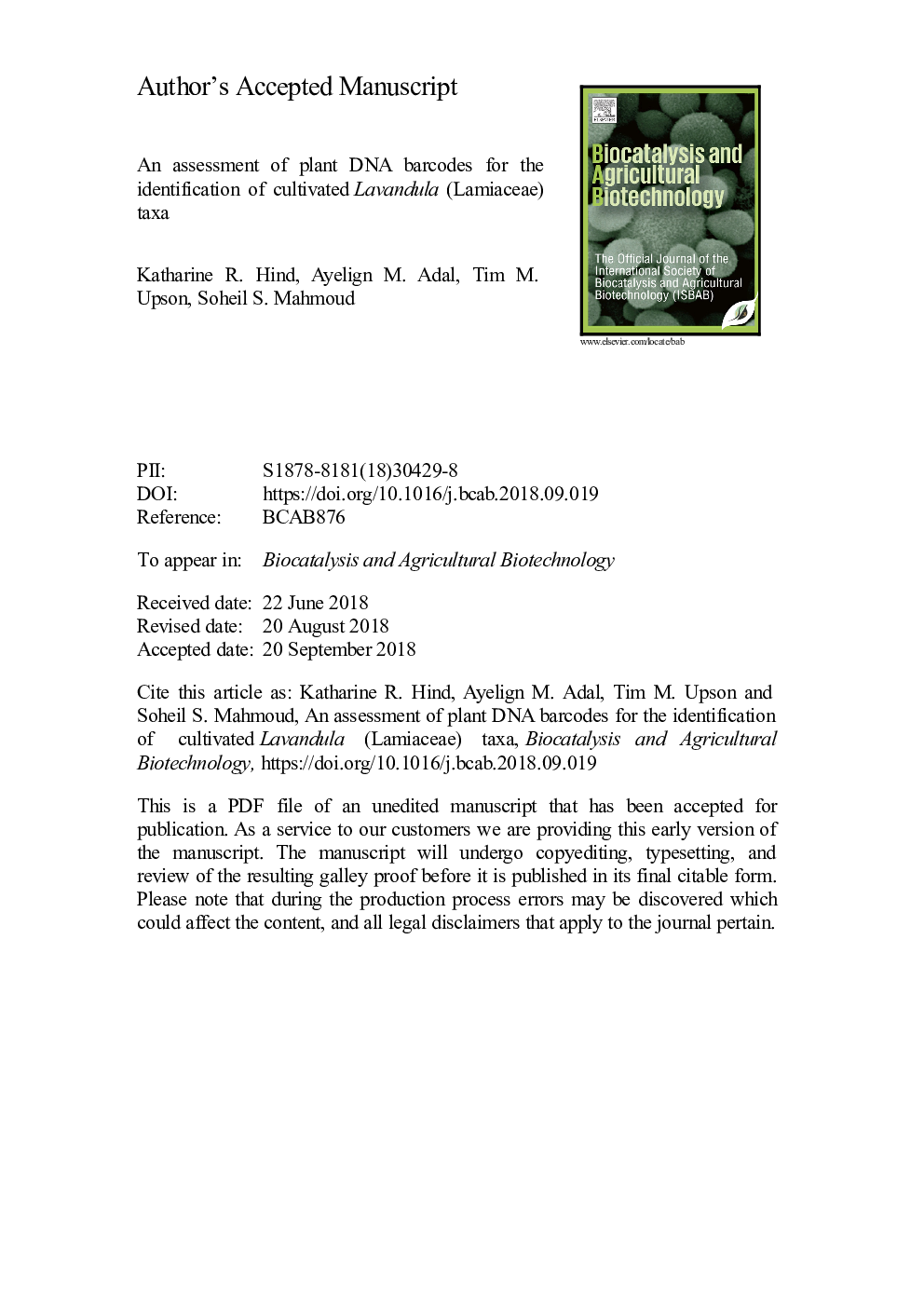| Article ID | Journal | Published Year | Pages | File Type |
|---|---|---|---|---|
| 11007653 | Biocatalysis and Agricultural Biotechnology | 2018 | 27 Pages |
Abstract
Historically, species identification in plants has relied upon detailed comparisons of morphological and anatomical features. Among Lavandula, morphological assessments are often paired with essential oil biochemistry to identify species, and the use of molecular taxonomic approaches has been limited mostly to wild species. We tested a molecular approach to identify three related, commercially important lavender taxa, two of which (L. angustifolia and L. x intermedia) are widely cultivated in British Columbia, Canada for commercial essential oil production. We tested the plant DNA barcode markers matK and rbcL as well as the plastid trnH-psbA spacer and the nuclear internal transcribed spacer (ITS), which have been used for species discrimination in other closely related plant species. Among tested markers, the selected primers were unable to amplify the matK region, a finding that has been reported for several genera in the Lamiaceae. Based on sequence comparison and tree analysis, the plastid markers, rbcL and trnH-psbA alone did not discriminate between L. angustifolia, L. latifolia and L. x intermedia, perhaps due to hybridization and/or introgression that occurs naturally between these two taxa. The ITS delineated the three species with few exceptions between L. angustifolia and L. x intermedia. The ITS concatenated with rbcL, trnH-psbA and rbcL+ trnH-psbA were able to discriminate the cultivated L. latifolia from that of L. angustifolia and L. x intermedia.
Keywords
Related Topics
Life Sciences
Agricultural and Biological Sciences
Agricultural and Biological Sciences (General)
Authors
Katharine R. Hind, Ayelign M. Adal, Tim M. Upson, Soheil S. Mahmoud,
